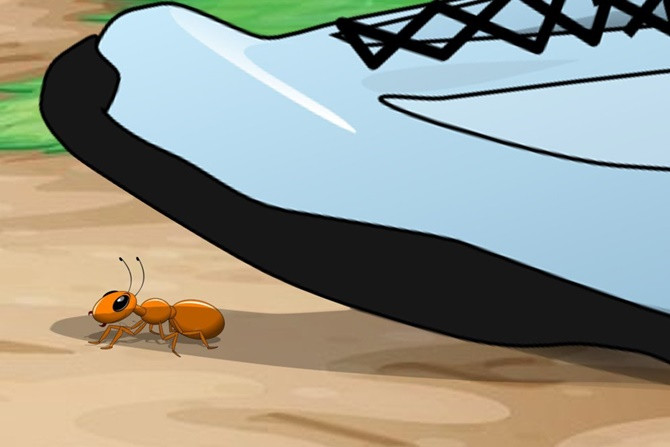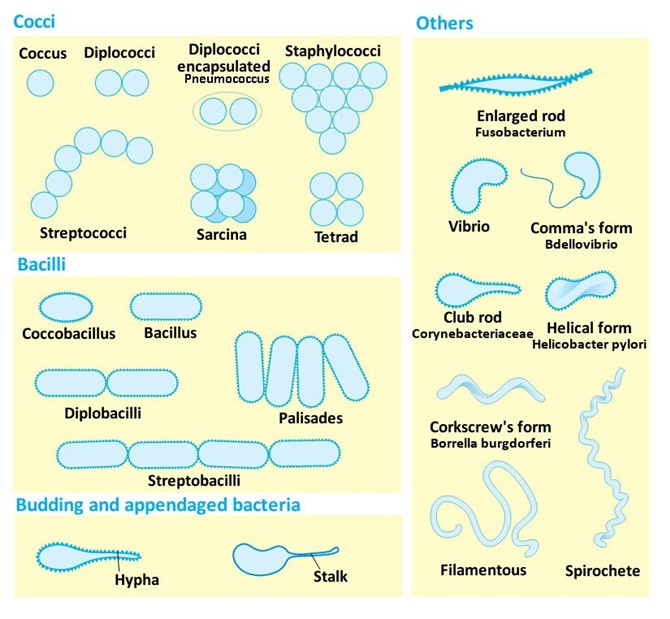Are you killing a lot of bacteria under each of your steps?
While walking or jogging, many of us often try to make sure we don't step on any tiny creature, such as ants crawling on the ground.
The act of adjusting your footsteps when encountering an insect often gives you the feeling that you have just done a good job. Admittedly, we did a good job of saving many small animals from our giant feet.

Have you ever thought about what happens every time I take a step on the ground?
But what about creatures smaller than ants? Have you ever thought about other creatures like bacteria and viruses, creatures that you can't see with your naked eyes?
You know that these creatures are practically everywhere, right? On your sleeve, on the handle of the door, on your smartphone and of course on the ground (with many other places). Have you ever thought about what happens every time I take a step on the ground? Are you crushing microbes and similar tiny life forms through this daily action?
How big is the bacterium?
You have read biological textbooks and know that bacteria are really small, but how small are they?
According to ScienceABC, common bacteria have a body length of 5-10 microns and 1-2 microns in diameter. If you are not sure, 1 micron is 0.0001cm. Clearly, bacteria are extremely small.

The common bacteria have a body length of 5-10 microns.
Moreover, bacteria have different shapes and sizes. Some spherical forms (also called cocci), some are rod-shaped, some are spiraling (spirilla) .
Viruses are even smaller than bacteria and are almost everywhere. In other words, they can be crushed by human feet like bacteria.
Can you crush bacteria with your hands and feet?
Theoretically, you can kill bacteria by stepping on them, but the reality is more complicated.
As you can imagine, it is difficult to intentionally kill bacteria, because they are extremely small. Some say, you can certainly kill bacteria by crushing them, or more specifically creating more pressure to break them.
In fact, killing bacteria in this way is real: it is used in food preservation processes called pascalization . In addition, also called high pressure processing (HPP) or bridging technology, it is a technique to preserve food in which the product is under very high pressure, leading to inactivity (or 'death ') some bacteria and microorganisms are present in the product.
Pressure up to 87,000 psi causes food-damaging microorganisms and spoiled microorganisms to not work without significantly altering the nutritional value of the product. Note that pascalisation does not make food completely sterile, but it can extend the shelf life of food.
Footsteps and bacteria
All cells, including bacteria, basically live in the ECM matrix (or extracellular matrix), they are just a group of extracellular molecules secreted by cells that provide support. Biochemistry and structure for surrounding cells.
Another point you need to keep in mind is what you see (with the naked eye) as a smooth, smooth surface almost always a rather rough surface from a micro perspective. Most objects (including human feet) have a bumpy surface and all are wide enough to hold thousands of bacteria.

All cells, including bacteria, basically live in the ECM substrate structure.
So when you walk into something small like a bacterial cell, you always enter the extracellular matrix. However, with a great pressure that your feet cause when stepping onto the floor, some bacteria will be pushed into small holes on the floor and stuck there. In such holes, the pressure is very high and you can kill some bacteria there.
However, most bacteria do not die in this way, they die because of separation from the extracellular matrix - the nutrient environment that they are developing and dependent on to maintain life.
In conclusion, you can kill a small amount of bacteria if you use a smooth surface and squeeze it hard into a smooth surface. And as explained above, we kill many bacteria by crushing them under the feet when walking or running.
Even so, there are still billions of bacteria and viruses completely unscathed and able to continue to grow.
Therefore, using "violence" to kill bacteria, is not what most people are doing.
- Why can't humans trample on bacteria?
- Harmless bacteria in the intestine turn into human cannibalism, killing 5 Chinese patients
- Find a way to kill bacteria in a completely new body
- The most toxic and strange forms of bacteria on the planet
- Check out the types of polar bacteria that are beneficial to humans
- Garlic is 100 times more effective than antibiotics
- Fear of the poisonous poisonous tree of Vietnam in 7 steps
- Forget sharks, these 5 bacteria also make you
- Bacteria, an inevitable part of ... humanity
- We should aim to walk 15,000 steps a day instead of 10,000 steps
- The method of killing harmful bacteria is more effective than sterilizing milk
- How does the custom of killing the Aztec gods take place?
 Why do potatoes have eyes?
Why do potatoes have eyes? 'Tragedy' the world's largest carnivorous life: Death becomes ... public toilet
'Tragedy' the world's largest carnivorous life: Death becomes ... public toilet Tomatoes were once considered 'poisonous' for 200 years
Tomatoes were once considered 'poisonous' for 200 years Detecting microscopic parasites on human face
Detecting microscopic parasites on human face